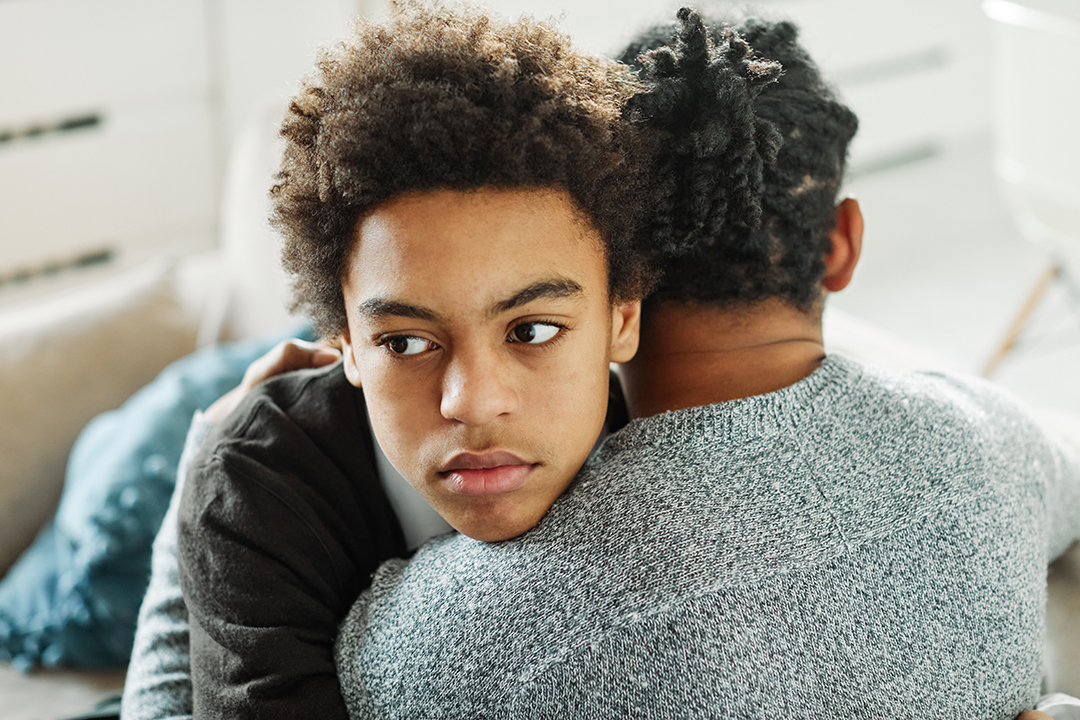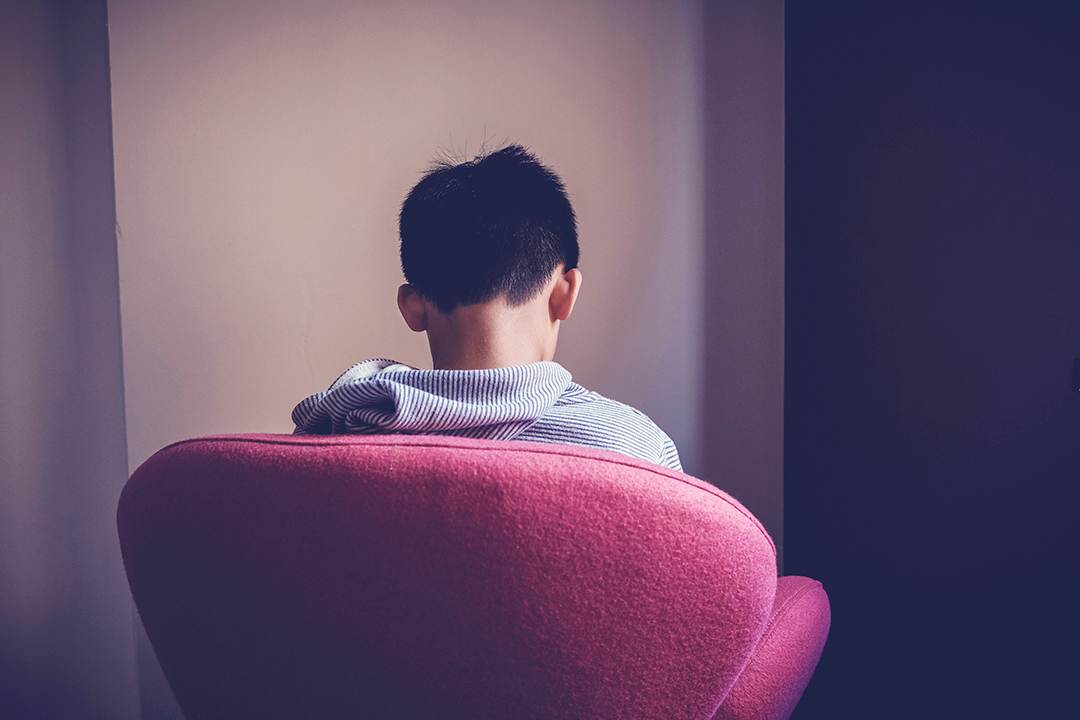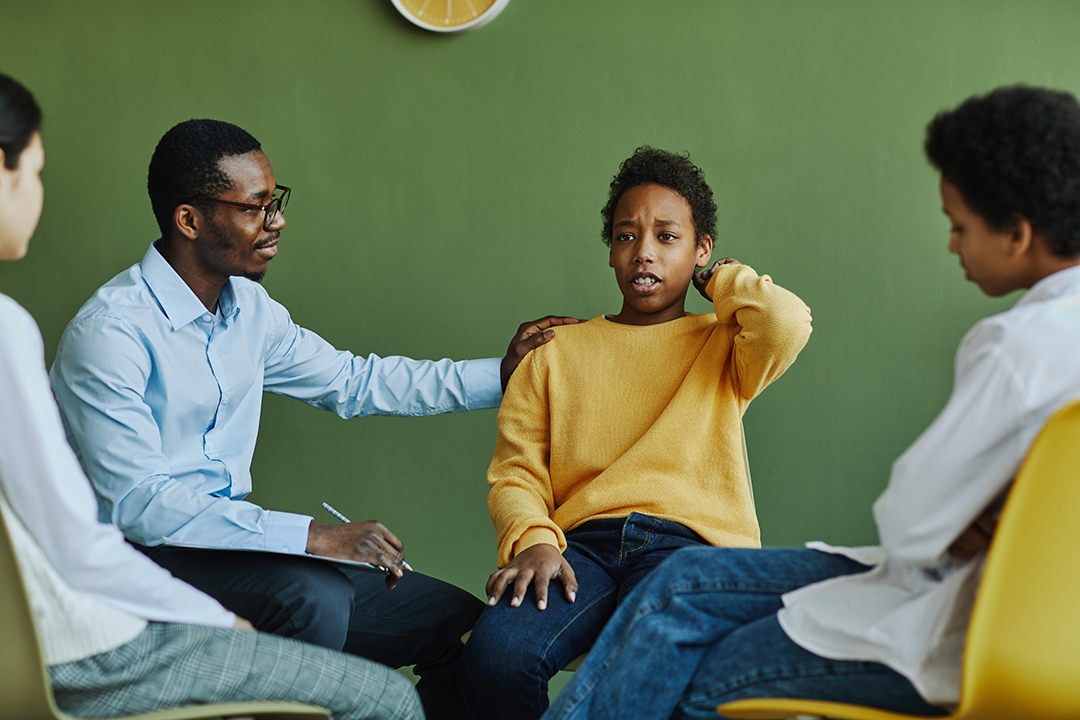A latest longitudinal examine by Zeytinoglu and colleagues (2025) gives insights into how parental verbal communication and little one traits contribute to the transmission of social fears. The examine exhibits the influence of each optimistic and unfavourable maternal statements about ambiguous social conditions, discovering that optimistic feedback had been linked to reductions in youngsters’s social worry beliefs, whereas unfavourable feedback predicted will increase, particularly amongst youngsters who had been behaviourally inhibited or had excessive anxiousness.
The Function of Parental Communication in Passing on Social Nervousness
Social anxiousness tends to run in households, however the mechanisms behind this sample stay solely partly understood (Eley et al., 2008; Lieb et al., 2000). Earlier analysis has pointed to each genetic and environmental pathways, however one particular route that has obtained rising consideration is parental verbal communication. Analysis has proven that anxious adults are likely to interpret ambiguous stimuli as threatening (Butler & Mathews, 1983; Muris et al., 2010). This interpretive bias could lead dad and mom to explain new experiences—corresponding to assembly unfamiliar friends or becoming a member of new teams—in additional threatening or cautionary phrases. For instance, dad and mom with stronger worry beliefs usually tend to describe novel stimuli as unfavourable and doubtlessly harmful, thereby passing on their very own fears by means of dialog (Muris et al., 2010). This course of has additionally been noticed exterior the lab. Through the COVID-19 pandemic, a number of research discovered that folks’ fear-related communication in regards to the virus mediated the connection between parental and little one worry beliefs (Nimphy et al., 2023; Radanović et al., 2021; Uy et al., 2022; Remmerswaal & Muris, 2011). These findings underscore the position of parental language as a mechanism for transmitting social fears to youngsters.

“Parental traits, notably worry beliefs, could form how dad and mom discuss to their youngsters about unsure or ambiguous social conditions.”
How Little one Traits Form Responses to Parental Messages
On the identical time, youngsters should not passive recipients of their dad and mom’ messages. Their very own traits—particularly behavioural inhibition (BI)—could have an effect on each how dad and mom behave and the way youngsters interpret what is claimed. BI is a temperament marked by fearful and avoidant responses to novelty, evident from youth (Fox et al., 2023). Longitudinal research have proven that BI predicts particular parenting behaviours, corresponding to elevated overprotection (Buss et al., 2021), larger discouragement of independence (Rubin et al., 1999), and extra unfavourable responses to youngsters’s misery (Kiel et al., 2021). Kids’s BI may additionally affect how dad and mom discuss social conditions, additional shaping youngsters’s understanding of their social world.
Kids’s personal anxiousness may additionally form how they reply to the verbal info dad and mom present. From a diathesis-stress perspective, youngsters who’re behaviourally inhibited or anxious could also be extra delicate to environmental cues like parental communication (Gazelle & Ladd, 2003; Gazelle & Rubin, 2019). Inhibited and anxious youngsters have a tendency to point out heightened consideration to risk (Pérez-Edgar et al., 2010) and larger emotional reactivity to unfavourable cues (Gomez & Gomez, 2002). This implies they might internalise parental warnings extra deeply—or, as some analysis suggests, react extra strongly to each unfavourable and optimistic statements (Area, 2006; Area & Value-Evans, 2009). Nonetheless, findings on whether or not anxious youngsters are extra aware of risk, security, or each varieties of cues are blended (Aktar et al., 2022). This underscores the significance of analyzing how each early temperament and present anxiousness signs reasonable the consequences of parental communication inside the identical youngsters over time.

“Kids’s early traits affect how they obtain and reply to parental communication.”
What did this examine contain?
On this examine, Zeytinoglu et al. (2025) examined how moms’ social worry beliefs form the best way they discuss to their youngsters about ambiguous social conditions, and the way this communication influences youngsters’s personal worry beliefs and behaviours. Additionally they investigated whether or not these results are moderated by little one temperament and anxiousness.
The longitudinal examine adopted 291 youngsters from toddlerhood to age 10. Behavioural inhibition (BI) was assessed at ages 2 and three utilizing a mixture of behavioural observations and parent-reported measures (Fox et al., 2001). At age 10, mom–little one pairs participated in a structured laboratory activity. Moms had been offered with vignettes describing ambiguous social conditions involving unfamiliar friends and had been requested to debate these eventualities with their little one whereas being video-recorded.
Researchers coded the moms’ verbal responses in the course of the dialogue, categorising statements as both optimistic or unfavourable. Kids accomplished measures of social worry beliefs earlier than and after the dialog, participated in behavioural duties assessing peer avoidance and interpretation bias, and self-reported on their social anxiousness signs (Birmaher et al., 1999).

What did the researchers discover?
The examine discovered that maternal verbal communication performed a mediating position within the hyperlink between moms’ social worry beliefs and youngsters’s post-conversation worry beliefs. When moms made extra optimistic statements, youngsters tended to report a discount in social worry beliefs. In distinction, extra unfavourable statements had been related to elevated worry beliefs—notably amongst youngsters with increased anxiousness ranges (Zeytinoglu et al., 2025).
Kids’s early temperament additionally appeared to form these dynamics. Those that confirmed increased ranges of BI in toddlerhood had been extra more likely to have moms who used fewer optimistic statements in the course of the dialog. In the meantime, youngsters with increased anxiousness signs had been particularly aware of their moms’ unfavourable remarks.
The examine additionally confirmed that youngsters’s worry beliefs had been mirrored of their behaviour. Those that endorsed stronger social fears after the dialog had been extra more likely to keep away from unfamiliar friends in symbolic methods—corresponding to sitting farther away throughout classroom-like duties—and to interpret ambiguous social conditions extra negatively (Gazelle & Ladd, 2003).
Collectively, these findings counsel that each parental communication and little one traits contribute to how social fears develop and are maintained over time (Aktar et al., 2022; Area, 2006).
What are the implications?
The findings provide invaluable insights for clinicians and others working with youngsters who expertise social anxiousness. Encouraging dad and mom to make use of extra optimistic language when discussing social conditions could assist scale back the danger of kids creating or reinforcing fearful beliefs. Even modest shifts in how dad and mom describe new or unsure experiences might help youngsters in decoding social cues in a extra versatile and fewer threatening means.
On the identical time, it’s additionally essential to recognise that youngsters could reply in a different way relying on their temperament and present ranges of hysteria. Figuring out which youngsters are extra susceptible to those influences might assist tailor help in ways in which meet every household’s particular wants.

Conclusions
The findings from Zeytinoglu et al. (2025) counsel that social fears in youngsters could develop by means of a delicate interaction between how dad and mom discuss social conditions and youngsters’s personal temperamental and emotional traits. Whereas parental language can affect youngsters’s beliefs and behaviours, the kid’s stage of behavioural inhibition or anxiousness could form how these messages are obtained. For clinicians and caregivers, gently encouraging extra supportive and fewer fear-based methods of speaking—whereas being conscious of every little one’s distinctive sensitivities—might be one useful step in decreasing the probability of social worry. Additional analysis into these complicated dynamics could proceed to tell extra responsive and developmentally conscious approaches.

The place subsequent?
This convention, led by Dr. Koraly Pérez-Edgar, McCourtney Professor of Little one Research at Penn State College, will discover how early-emerging temperament, notably behavioral inhibition, can affect youngsters’s long-term social and emotional growth.
Drawing on intensive longitudinal analysis and neuroscience, Dr. Pérez-Edgar will present how patterns of vigilance and avoidance in infancy work together with consideration and emotion regulation to form danger for social anxiousness. She’s going to spotlight how particular person variations in these early processes provide key alternatives for intervention.
Designed for researchers and practitioners alike, this session will steadiness cutting-edge science with sensible implications, leaving the viewers with a deeper understanding of how early traits can form lifelong outcomes and the way we will intervene.
Use the interactive programme under to realize an summary of the subject, meet the speaker, check your information, and an entire lot extra!
NB This weblog has been peer reviewed
References
Zeytinoglu, S., White, L. Ok., Morales, S., Degnan, Ok., Henderson, H. A., Pérez-Edgar, Ok., Pine, D. S., & Fox, N. A. (2025). The roles of parental verbal communication and little one traits within the transmission and upkeep of social fears. Journal of Little one Psychology and Psychiatry. Advance on-line publication. https://doi.org/10.1111/jcpp.14169
Aktar, E., Nimphy, C. A., van Bockstaele, B., & Pérez-Edgar, Ok. (2022). The social studying of risk and security within the household: Mum or dad-to-child transmission of social fears through verbal info. Developmental Psychobiology, 64(4), e22257. https://doi.org/10.1002/dev.22257
Birmaher, B., Brent, D. A., Chiappetta, L., Bridge, J., Monga, S., & Baugher, M. (1999). Psychometric properties of the Display screen for Little one Nervousness Associated Emotional Problems (SCARED): A replication examine. Journal of the American Academy of Little one and Adolescent Psychiatry, 38(10), 1230–1236.
Butler, G., & Mathews, A. (1983). Cognitive processes in anxiousness. Advances in Behaviour Analysis and Remedy, 5(1), 51–62.
Buss, Ok. A., Zhou, L., & Coach, S. M. (2021). Kids’s fearful temperament and parenting: The bidirectional relationship. Little one Improvement Views, 15(3), 171–176.
Eley, T. C., Rijsdijk, F. V., Perrin, S., O’Connor, T. G., & Bolton, D. (2008). A multivariate genetic evaluation of particular phobia, separation anxiousness and social phobia in early childhood. Journal of Irregular Little one Psychology, 36(6), 839–848.
Area, A. P. (2006). The behavioural inhibition system and the verbal info pathway to youngsters’s fears. Journal of Irregular Psychology, 115(4), 742–752.
Area, A. P., & Value-Evans, Ok. (2009). Temperament moderates the impact of parental risk info switch throughout childhood. Behaviour Analysis and Remedy, 47(4), 282–287.
Fox, N. A., Henderson, H. A., Rubin, Ok. H., Calkins, S. D., & Schmidt, L. A. (2001). Continuity and discontinuity of behavioural inhibition and enthusiasm: Psychophysiological and behavioural influences throughout the primary 4 years of life. Little one Improvement, 72(1), 1–21.
Gazelle, H., & Ladd, G. W. (2003). Anxious solitude and peer exclusion: A diathesis–stress mannequin of internalizing trajectories in childhood. Little one Improvement, 74(1), 257–278.
Gomez, R., & Gomez, A. (2002). Consideration bias and emotional sensitivity in anxious youngsters. Persona and Particular person Variations, 33(3), 533–544.
Kiel, E. J., Value, M., & Buss, Ok. A. (2021). Toddler fearful temperament, maternal responses to fret, and anxiousness growth: A bidirectional, longitudinal mannequin. Improvement and Psychopathology, 33(4), 1374–1386.
Lieb, R., Wittchen, H. U., Höfler, M., Fuetsch, M., Stein, M. B., & Merikangas, Ok. R. (2000). Parental psychopathology, parenting kinds, and the danger of social phobia in offspring: A prospective-longitudinal neighborhood examine. Archives of Normal Psychiatry, 57(9), 859–866.
Muris, P., Mayer, B., Borth, M., & Vos, M. (2010). Kids’s interpretations of ambiguous conditions: Relations with little one anxiousness, behavioural inhibition, and parental anxiousness. Behaviour Analysis and Remedy, 48(6), 497–505.
Nimphy, C. A., Elzinga, B., Van der Does, W., & Aktar, E. (2023). COVID-19 worry beliefs and parental verbal info: Predicting little one anxiousness. Journal of Household Psychology. Advance on-line publication.
Pérez-Edgar, Ok., Bar-Haim, Y., McDermott, J. M., Chronis-Tuscano, A., Pine, D. S., & Fox, N. A. (2010). Consideration biases to risk and behavioural inhibition in early childhood form adolescent social withdrawal. Emotion, 10(3), 349–357.
Rubin, Ok. H., Nelson, L. J., Hastings, P. D., & Asendorpf, J. B. (1999). The transaction between dad and mom’ perceptions and youngsters’s social habits. Worldwide Journal of Behavioral Improvement, 23(4), 791–811.
Radanović, B., Micić, V., Pavlović, J., & Krstić, Ok. (2021). The position of parental worry communication in little one anxiousness throughout COVID-19. Little one Psychiatry & Human Improvement, 52, 120–128.
Remmerswaal, D., & Muris, P. (2011). Kids’s worry reactions to in style scary films and books: The position of parental communication. Journal of Little one and Household Research, 20(6), 766–773.
Uy, M. E., Raj, R. P., Pascual, M. C., & Vicedo-Cabatingan, A. M. (2022). Mum or dad-child transmission of COVID-19 fears: The mediating position of parental messages. Household Course of. Advance on-line publication.


